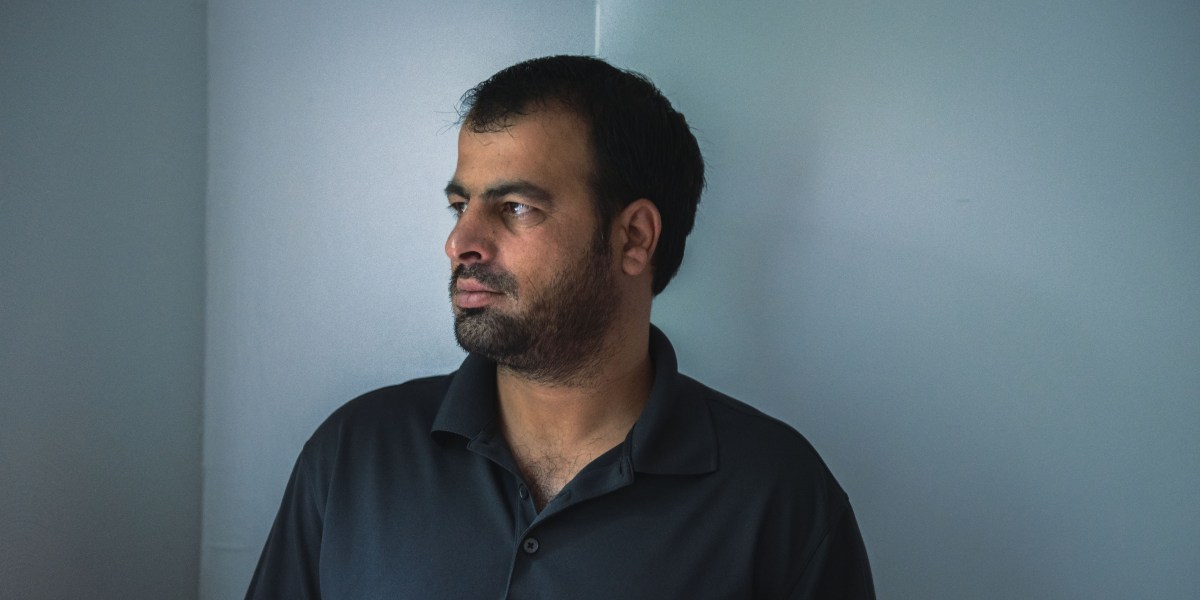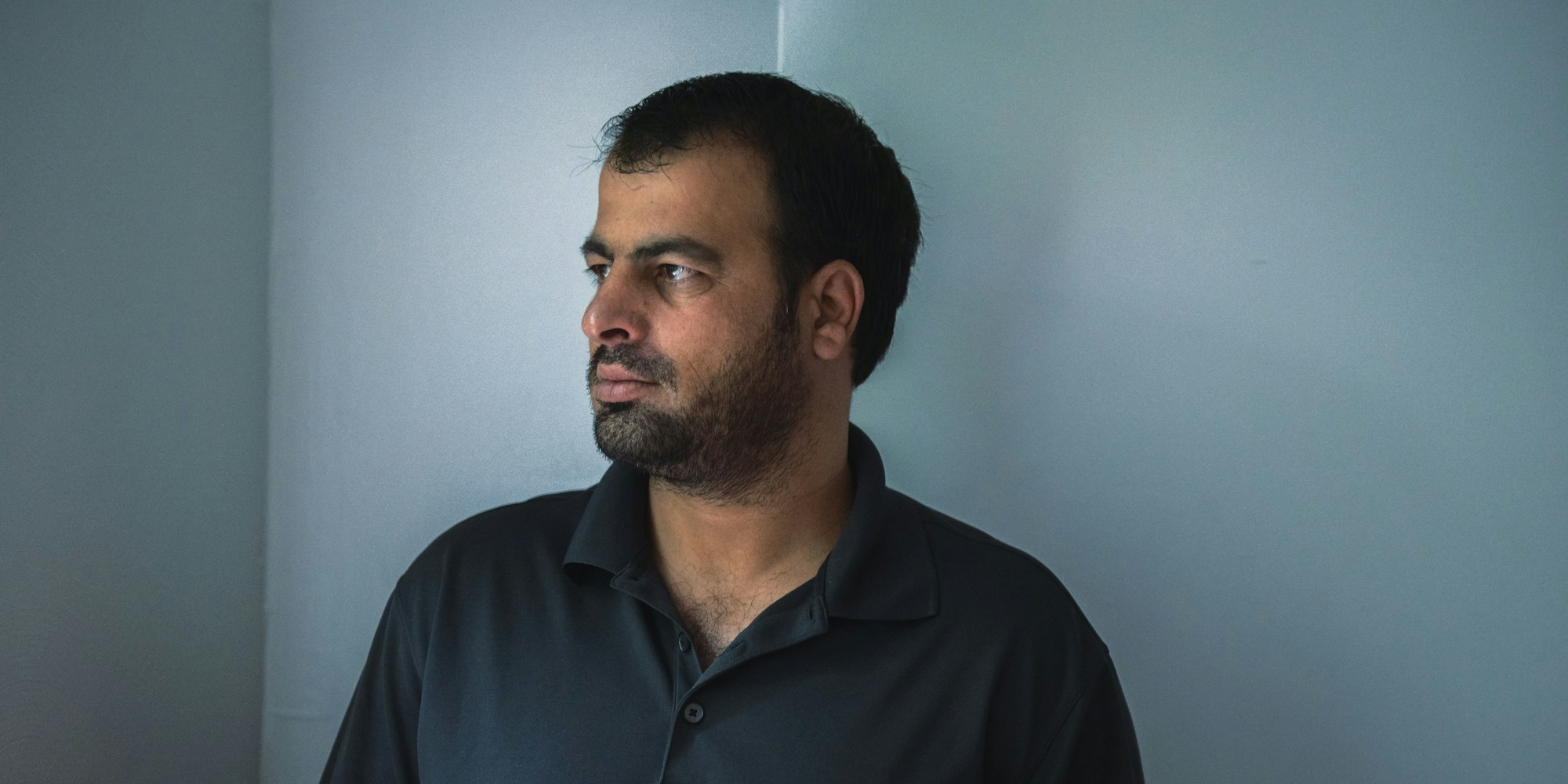
The Evacuation of the CIA’s Afghan Proxies Has Opened One of the War’s Blackest Boxes
Afghan Zero Units hold clues to many of the war’s mysteries, including how the CIA engineered deadly night raids that contributed to the Taliban’s victory.

On a rainy Saturday morning in May, Hayanuddin Afghan, a former member of a CIA-backed militia that was once his country’s most brutal and effective anti-Taliban force, welcomed me to his new home in a hilly neighborhood of Pittsburgh.
He invited me in through the kitchen, where his wife, who was pregnant with their fourth child, was baking traditional Afghan bread with flour from Aldi’s. The trip downtown to buy groceries was among the greatest challenges of Hayanuddin’s new life in Pittsburgh. It involved hauling heavy bags back home on foot and in multiple city buses, whose schedules were unknowable since he didn’t speak English and had not downloaded the relevant app.
“It is difficult to descend from a very strong position to a very weak position,” Hayanuddin told me. In Afghanistan, “we had value. It was our country, and we were making sense for that country. But now, even our generals and commanders, everyone is in the same position.”
In Afghanistan, it was impossible to talk at any length to members of the secretive commando forces known as the Zero Units. They hunted the Taliban in night raids and were widely accused of killing civilians, including children. But last September, Hayanuddin and his Zero Unit comrades were the beneficiaries of the most successful aspect of the Biden administration’s chaotic withdrawal from Afghanistan: the CIA’s rescue of its allied militias. Their arrival in the U.S. over the last year has cracked open one of the war’s blackest boxes.
My conversations with Hayanuddin and several other militia members yielded new details about the command structure, operations, and final days of shadowy units that were nominally overseen by the Afghan intelligence service but were in fact built, trained, and in many cases fully controlled by the CIA. Their fighters hold clues to many of the war’s mysteries, including how U.S. intelligence engineered and oversaw years of deadly night raids that contributed to the Taliban’s ultimate victory, and how a secret deal between longtime enemies may have hastened the lightning collapse of the Afghan security forces last August.
Celebrated as heroes by their American handlers and some Afghans who oppose the Taliban, militiamen like Hayanuddin were feared and detested by many rural Afghans, who bore the brunt of their harrowing raids. While hundreds of Zero Unit members and their closest relatives made it to the U.S., they left behind extended families who have suffered abuse, imprisonment, and death threats under the new government.
The CIA did not respond to detailed questions about its role in overseeing, evacuating, and resettling Zero Unit members and whether the agency would do more to help militiamen and their families left behind in Afghanistan. “The United States made a commitment to the people who worked for us that we would create a concrete pathway to U.S. citizenship for those who gave so much to assist us over the years,” an agency spokesperson told me in an email. “It will take time, but we never forget [our] partners and are committed to helping those who assisted us. We are continuing to work closely with the State Department and other US government agencies on this effort.”
“With regard to allegations of human rights abuses,” the email continued, “the U.S. takes these claims very seriously, and we take extraordinary measures, beyond the minimum legal requirements to reduce civilian casualties in armed conflict and strengthen accountability for the actions of partners. A false narrative [exists] about these forces that has persisted over the years due to a systematic propaganda campaign by the Taliban.”
Hayanuddin said that he and his comrades took care to avoid harming bystanders during their raids, even using loudspeakers to warn women to stay inside or shelter in basements before the fighting began. “For me, it was like a holy war,” he said. “I was there to target bad guys.” But he also described lingering feelings of rage, guilt, and remorse, and connected his struggle in Pittsburgh to his past. At one point, he wondered aloud if he was being punished.
“Sometimes I can’t control my anger and my anxiety,” he told me. “My heart is so sad, like someone is squeezing it very hard. I don’t know why. Maybe because of what happened back home or what is happening here.”
Reversal of Fortune
I met Hayanuddin last spring, at an Afghan New Year’s celebration in a park in Pittsburgh, where we had both recently settled as refugees. I had worked for the New York Times in Kabul for five years and made many trips to the front lines to report on the Afghan security forces, including in the days before the Taliban captured the Afghan capital last August. I was evacuated with other Times staffers to Houston, where I lived in a hotel for several months before getting a job as a visual journalist at the Pittsburgh Tribune-Review and moving north.
At first, Hayanuddin didn’t want to talk to me. But after several attempts, he grew more comfortable, in part because he thought he was talking about an episode of the war that was closed, and in part because we were both exiles from the same place, trying to start new lives in Pittsburgh while still longing for home.
Hayanuddin had served six years with a unit known as 03, fighting the Taliban across Afghanistan’s southern deserts from his base in a compound previously occupied by the one-eyed former Taliban leader Mullah Mohammed Omar. U.S. special operators had commandeered the property when they arrived in Kandahar in 2001 and turned it into a redoubt for American and Afghan intelligence forces. With hundreds of other Zero Unit fighters, Hayanuddin crossed shifting front lines in the final days of the war to get to Kabul’s CIA-controlled Eagle Base. From there, he was airlifted to the Hamid Karzai International Airport, where he briefly worked security before being handed $8,000 in cash — half a year’s salary — and flown with his wife and three young children to Fort Dix.
At 37, with a seventh-grade education, Hayanuddin, along with his comrades, is facing a reversal of fortune that is humiliating, infuriating, and utterly intractable. After almost two decades as an American proxy — from guarding U.S. bases to killing Afghans in partnership with the world’s most powerful intelligence agency — he has landed, as a poor and vulnerable refugee, in a three-bedroom apartment with flowered curtains he had to harangue the resettlement agency to install in keeping with Pashtun culture, which dictates that a woman must be shielded from the eyes of passing strangers.
The Zero Units, also known as Counterterrorism Pursuit Teams, were born soon after the first U.S. military and intelligence operatives arrived in Afghanistan in the wake of the 9/11 attacks. Formed in 2002, they operated entirely under U.S. control until 2012, Gen. Yasin Zia, Afghanistan’s former chief of Army staff, told me in August from London, where he leads an anti-Taliban resistance force. “The government of Afghanistan had no interference in these units,” said Zia, who spent many years in senior roles in the U.S.-backed Afghan government, including as deputy director of the Afghan intelligence service, the National Directorate of Security, which nominally oversaw the units in recent years.
The first of what would become the Zero Units operated in eastern Afghanistan, in a mountainous area along the Pakistani border where the Taliban and other militants often sought refuge between attacks on U.S., NATO, and Afghan government forces. That militia, known as the Khost Protection Force, or KPF, covered the southeastern region of the country. Later, the CIA created and trained at least three more units: 01, which operated in Kabul, Logar, and Wardak provinces in central Afghanistan; 02, based in Jalalabad, which fought in the east; and Hayanuddin’s unit, 03, based in Kandahar and fighting across the south.
In 2010, under pressure from then-Afghan President Hamid Karzai, U.S. officials agreed to transfer oversight of the Zero Units to NDS “physically, but not technically,” Zia said. “We had the names and ranks of members of Zero Units,” he told me. “But their salary was paid by Americans, their targets were given by Americans, and until the end the Americans were with these units.”
As the Obama administration transitioned from combat operations to a counterterrorism and advisory mission in Afghanistan after 2011, the U.S. handed control of several Zero Units over to the Karzai government, Zia said. But the CIA retained control of other key units, including the Kabul-based 01; the KPF; and Hayanuddin’s 03.“Their salary was paid by Americans, their targets were given by Americans, and until the end the Americans were with these units.”
The units targeted the Taliban, the Haqqani Network, and Al Qaeda, but they were not accountable to the Afghan government — not even to the president. In 2019, Afghanistan’s then-national security adviser, Hamdullah Mohib, responded to allegations of extrajudicial killings by 01 — including massacres of children in madrassas — by noting that the unit operated “in partnership with the CIA.”
Hayanuddin had a front-row seat to the shambolic American withdrawal from Afghanistan, and now he can describe what he saw and heard in the war’s final months. The Zero Units were built to work in tandem with U.S. air support, but in August 2020, a year before the government of Afghan President Ashraf Ghani collapsed, U.S. forces began to radically scale back their air support for his unit, Hayanuddin said.
“Our American advisers left our bases for Kabul, and the choppers that would wait in our base on the edge of Kandahar City left with them,” he recalled. “Our commanders would only report to Americans about our operations, and the Americans would just say, ‘Go ahead.’ We were not working as closely as we used to.”

